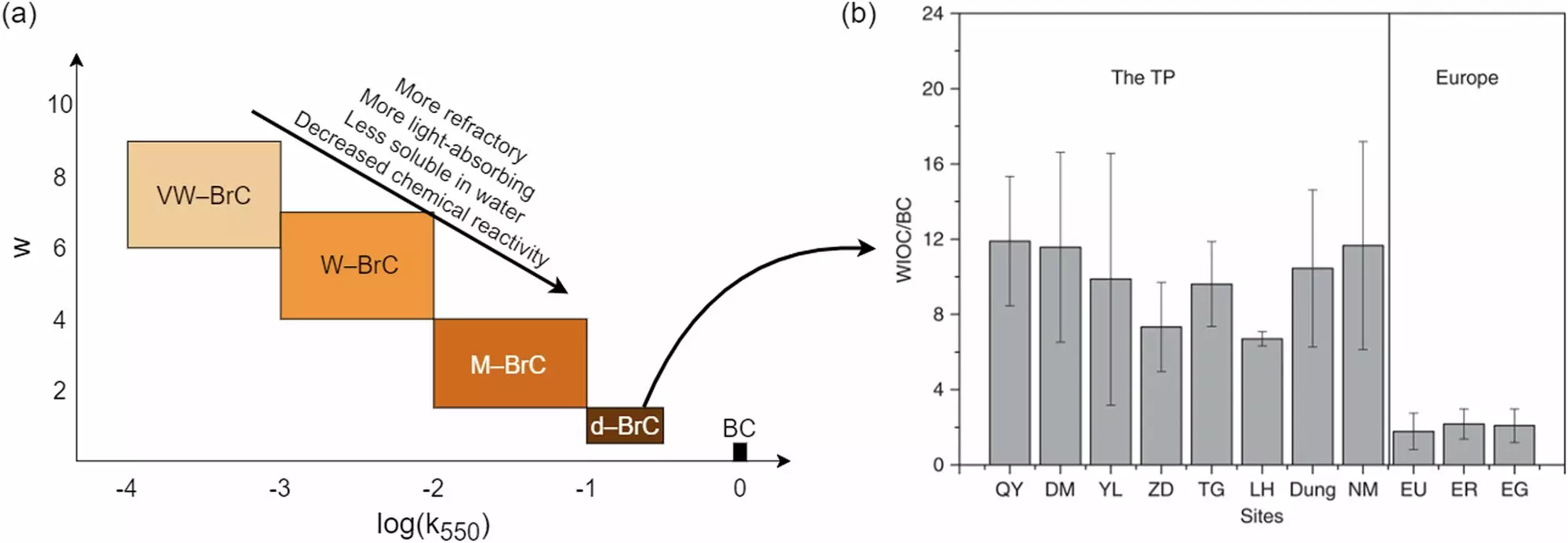Wildfires have long-lasting effects on the environment, with one of the lesser-known consequences being the particles they leave behind that contribute to climate change. Recent research has shed light on the role of dark-brown carbon (d-BrC) in snow melting, highlighting its significance in warming the atmosphere.
Researchers at Washington University in St. Louis have delved into the world of d-BrC and its impact on snowy regions. Unlike black carbon, d-BrC is light-absorbing and water-insoluble organic carbon, making it a potent snow-warming agent. This discovery challenges previous notions that black carbon was the main culprit in snow melting.
The deposition of d-BrC on snow caps is akin to switching out a white t-shirt for a dark brown poncho, as it darkens the snow and reduces its reflectivity. This results in increased absorption of sunlight, warming up the snow and the surrounding air. By underestimating the role of d-BrC, researchers have been missing a crucial piece in understanding the impact of wildfire smoke deposition on snow melt.
Led by Rajan Chakrabarty and his team at WashU, the research on d-BrC’s effects is entering the experimental phase. Using a four-foot-tall snow globe in the lab, they plan to mimic snow-aerosol interactions by creating snow and depositing aerosols on it. This experimental approach will provide valuable insights into the real-world effects of d-BrC.
The discovery of d-BrC as a significant snow-warming agent has important implications for climate models and measurements. As massive wildfires become more common, policymakers will need to address the issue of d-BrC deposition to mitigate anomalous snow melt. While d-BrC absorbs slightly less light than black carbon, its higher abundance in wildfire plumes makes it a key player in the warming cycle.
The research on d-BrC and its impact on snow melting sheds new light on the complex interactions between wildfires, snow, and climate change. By uncovering the role of d-BrC as a potent snow-warming agent, researchers are paving the way for more accurate climate models and measurements. As we continue to grapple with the effects of wildfires on the environment, understanding the role of d-BrC is crucial in addressing the challenges of climate change.


Leave a Reply